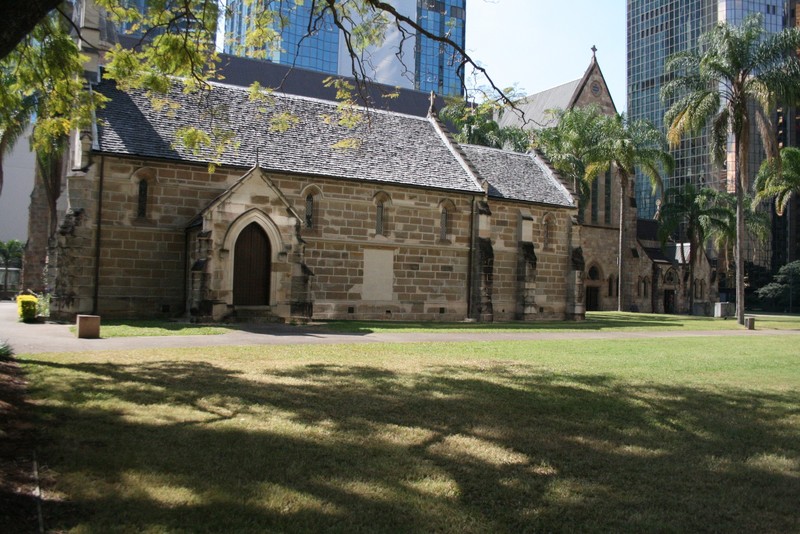Images & tables
Understanding figures and tables
In APA referencing:
- Figures: are any image, graph, chart, photograph, drawing, illustration or visual display displayed in your paper that is not a table.
- Tables: show numerical values or textual information arranged in columns and rows.
Required elements:
Every figure or table needs:
- Figure or Table number (in bold): Figure 1 or Table 1, numbered consecutively
- Title (italics, title case): One double-spaced line below the number
- The image or table itself
- Note (if needed): Figure notes contain information needed to clarify the contents of the figure for readers. Under the image or table, begin with the word 'Note.'. Include copyright attribution and source information here. The content in the note is double spaced and aligned left.
In-text citations
Do not write "the table above" (or "below") in your text. Always refer to figures and tables by number in your text:
- "As shown in Table 3 …"
- "(see Figures 4 and 7)."
- "Table 2 illustrates …"
Note: If you refer to a figure or table from a source but do not reproduce it in your document, use a standard in-text citation including the page number where the figure/table appears (e.g., "The diagram in Smith (2020, p. 45) shows …"). Include the full reference in your reference list as usual as per the source type. No figure number or copyright note is needed when you are only referring to, not reproducing, the visual content.
Click on each of the elements below to learn about including figures and tables in your work.
The basic elements and formatting of figures or tables are:
Figure or Table Number
- The figure or table number (e.g. Figure 2) appears in bold font above the figure or table title.
- Number figures or tables consecutively, in the order they are mentioned in your paper.
Figure or Table Title
- The figure or table title appears one double spaced line below the figure or table number.
- Use title case capitalisation (where only minor words such as 'of' and 'in' do not start with a capital) and format using italics.
Image or Table
- The inserted image or table goes under the title
Note
- If required, enter 'Note' in italics.
Source attribution
- If reprinting an image covered by copyright, attribute the source in the note. Various examples are listed below.
- Double space the Note and align left.
- Provide the full reference to the source in your reference list.
For presentations and videos
- Figure/table numbers, titles, and notes are optional
- You can include the full reference for the item on each slide or in a reference list at the end
- Consult your lecturer or supervisor for specific guidance
Copyright considerations
- If a figure or table is being reproduced for inclusion in a work that is being published (for example, as a journal article, book or thesis), you must seek permission from the copyright holder. Include a permission statement (Reprinted or Adapted with permission) in the note under the image only if you have sought and obtained permission to reproduce or adapt the copyrighted material.
See Tables and Figures on the APA Style Blog for more information.
When attribution is not required
No reference list entry or copyright note is needed for:
- Clip art/stock images labeled "no attribution required"
- Public domain images (e.g. with a CC0 license)
- Stock images freely available in Microsoft Office
- Your own original photographs, figures, graphs, artwork or images
Example: Figure not requiring attribution
Figure 1
Example of Stimuli Used in Experiment 1

Note. Participants assigned to the study were shown various images of cats, including this one.
Notes
- If the image, chart or table requires an explanation or description other than the figure title, you may wish to include this in the figure note (see example above).
- For figures you created yourself, you can optionally state this in the figure note (e.g., "Note. Figure created by author."; or "Note. Own work." ).
- If you cite a previously published self-created image which has since been published again in book, journal article etc. copyright may now reside with the publisher, and permission need to be sought to use the image again.
- For more information, see the APA Style Blog: Clip art or stock images references.
How to attribute sources
When reproducing a figure or table from another source, you need to cite it in the following two locations:
- Figure/Table Note
- Reference list.
1. Figure/Table Note
The content of the figure/table note depends on the source type. Use "From" for reproduced content or "Adapted from" for modified content.
Article
Book
Chapter from edited book
Image from website - where the image has an identified creator or artist
Image from website - where there is no identified creator or artist for the image
Table from website
2. Reference list
Provide the full APA citation for the source of the figure or table, using the standard format for that source type (article, book, chapter from edited book, website etc.).
Exceptions
- When an image sourced via the web has an identified creator, cite the image title and creator in both the figure note and reference list. When no creator is identified, cite the webpage/document title and website author/organisation in both locations.
- For AI Generated images, no reference list entry is required. Acknowledge the source in the figure note only.
Examples by source type
When incorporating figures and tables from external sources into your work, you must provide appropriate attribution. The format varies depending on the source type. Select the relevant category below for specific guidance.
Example:
Figure 1
An AI generated image of nurses collaborating together

Note. Image created in ChatGPT from the prompt 'create an image of a group of nurses working together in a modern hospital setting'.
Notes
- Include acknowledgement in the caption under the image.
- Do not provide a citation for the image created using AI in your reference list.
When citing images from websites, the attribution depends on whether the image has an identified creator.
Scenario 1: image has an identified creator/artist
Cite the image as a standalone work with the creator as the author.
Figure note
Examples
Figure 1
From Duke's Dock

Note. From From Duke's Dock [Oil painting], by R. E. Taylor Ghee, ca. 1925, National Gallery of Victoria, (https://www.ngv.vic.gov.au/explore/collection/work/5615/). In the public domain.
Figure 2
Boreal Owl (Aegolius funereus)

Note. From Boreal Owl (Aegolius funereus) [Photograph], by D. A. Leifheit, 2013, Flickr (https://www.flickr.com/photos/denalinps/8614178747/). CC BY 2.0.
Reference list
Examples
Leifheit, D. A. (2013). Boreal owl (Aegolius funereus) [Photograph]. Flickr. https://www.flickr.com/photos/denalinps/8614178747/
Taylor Ghee, R. E. (ca. 1925). From Duke's Dock [Oil painting]. National Gallery of Victoria, Melbourne. https://www.ngv.vic.gov.au/explore/collection/work/9783/
Scenario 2: Image has no identified creator
Cite the webpage/document that contains the image, with the website author/organisation as the author.
Figure note
Example
Figure 1
Old St Stephens Church

Note. From Old St Stephens Church [Photograph], by Department of Environment, Science and Innovation, 2013, Queensland Heritage Register (https://apps.des.qld.gov.au/heritage-register/detail/?id=600108). CC BY.
Notes
- Provide attribution to the creator of the image (not the website), unless the image doesn’t list a creator, then you attribute the website author or organisation.
- Many images found online have few details, but always check for extra information by:
- clicking on or hovering your mouse over the image (may reveal title or description)
- looking at text near the image (e.g. captions, credits or acknowledgements)
- looking at the page footer or credits section
- right clicking the image and selecting 'open image in new tab' (the URL may contain the photographer's name or image title)
- inspecting the source code of the webpage to find alt text, metadata or copyright information in the html.
Table note
Example
Table 1
Leave-on Product Details as Containing Microbeads By Product Type
Note. From An Assessment of the Presence of Microbeads in Rinse-Off Personal Care, Cosmetic And Cleaning Products Currently Available Within The Australian Retail Market, by K. Farrell and F. Harney, November 30, 2020, (https://www.dcceew.gov.au/sites/default/files/documents/microbeads-rinse-products-survey-report.pdf). Copyright 2020 by Envisage.
Reference list
Provide the full APA citation for the source of the table, as per the relevant source type (for example, article, book, chapter from edited book, website).
Note:
- Always reproduce the table exactly as it appears in the original source.
Figure/table note
Example:
Figure 1
Women Meet in the Tidal Zone During Ngawiya Maan (We Take to Give)
Note. From “Songlines, Museology and Contemporary Aboriginal Art," by P. Matt, 2018, Artlink, 38(2), p. 38 (https://search.informit.org/doi/10.3316/informit.626228289052306). Copyright 2018 by Stella Stories courtesy Australian Museum.
Reference list
Figure/table note
Example:
Figure 1
Overview of Knowledge Base Acceleration
Note. From Entity-Oriented Search (p. 190), by K. Balog, 2018, Springer (https://uis.brage.unit.no/uis-xmlui/handle/11250/2581845). Copyright 2018 by K. Balog.
Reference list
Figure/table note
Example:
Figure 3
How to Swim the American Crawl
Note. From "Swimming the Crawl to Educate the Modern Body: Visual Material and the Expanding Market for Participatory Sports in the USA, 1890s-1930s," by O. Steiglitz, in C. Bonah and A. Laukotter (Eds), Body, Capital, and Screens: Visual media and the Healthy Self in the 20th Century, (p. 165), 2020, Amsterdam University Press (https://doi.org/10.2307/j.ctv12sdvgj.9). Copyright 1934 by F. J. Sullivan.
Reference list
Use standard citation format for a chapter from an edited book.
Example
Figure 1
Portable Hyperbaric Chamber

Note. This photograph of a Camp D'Altitude hyperbaric chamber was provided courtesy of Charles Marquette. The photograph is from"Patient Education: High Altitude Illness (Including Mountain Sickness) (Beyond the Basics)," by S. A. Gallagher and P. Hackett, 2019, (https://www.uptodate.com/contents/high-altitude-illness-including-mountain-sickness-beyond-the-basics). Copyright 2024 by UpToDate.
Reference list
Gallagher, S. A., & Hackett, P. (2019). Patient education: High altitude illness (including mountain sickness) (Beyond the basics). UpToDate. Retrieved April 12, 2022, from https://www.uptodate.com/contents/high-altitude-illness-including-mountain-sickness-beyond-the-basics.
Notes
- Include database information only for databases that provide original proprietary works, for example, UpToDate, Cochrane Database of Systematic Reviews.
- If there is no title, give a concise description of the image and use this for the title.



